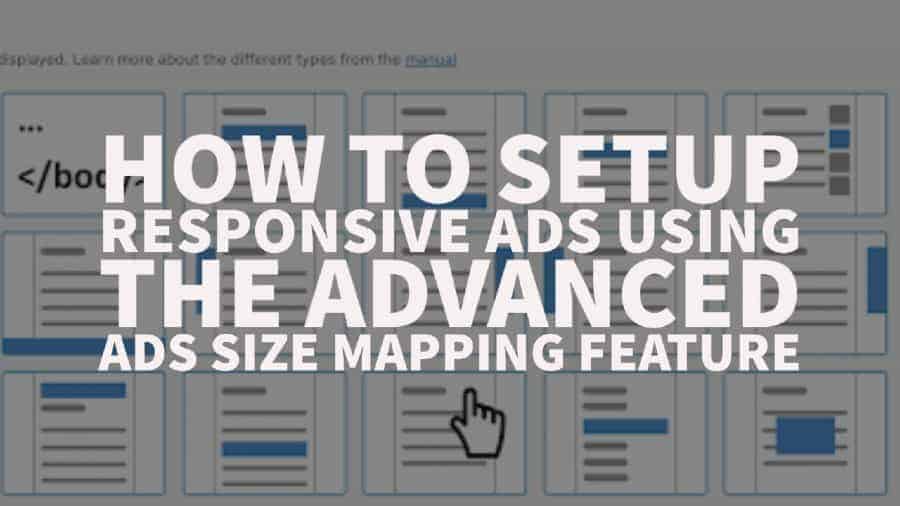
This post was most recently updated on February 25th, 2025
So, you’ve decided to venture into programmatic video. Congratulations! You’re making a smart decision that will help you reach new audiences and get your content seen by more people.
But before you can truly reap the benefits of programmatic video, there are a few things you need to do to make sure your campaigns run smoothly and achieve their full potential. In this post, we’ll go over some important tips you need to know to improve video programmatic health in 2025.
Keep reading for tips that will help you get the most out of your investment in this growing advertising medium.
Google recently released new data that revealed that improving the programmatic signal coverage correlates directly to increased eCPMS, fill rate, and instream video revenue.
Globally, publishers with high programmatic inventory signal coverage see a 25% revenue uplift on average compared to inventory with low programmatic inventory signal coverage. (Source: Google Ad Manager Internal Data, Q4 Global)
The numbers below speak for themselves.
There are 4 key things that buyers value in their video inventory. The box section covers video signals, which we’ll discuss in the immediate section.
Buyers value video inventory, that is…
First, let’s understand how to report and assess on your current programmatic health score.
When it comes to reporting programmatic health, these specific reports will be divided into 2 phases. The first phase was the launch of Historical Reporting in Query Tools.
This tool enables you to drill into the programmatic health of specific slices of inventory, such as line items, ad units, platforms, or apps.
You can generate a report applying the following many dimensions:
Now, in the second phase, i.e the newer phase is the programmatic video signal dashboard. It’s a network-level snapshot of your instream video inventories programmatic signal score that appears in ad manager. You’ll be able to view this whenever you want.
Since this is not available yet, stay tuned for the general launch very soon.
Now, I’d love to highlight our existing programmatic health reporting tools. This helps you address key questions like:
Allow publishers to identify the inventory that meets the 3 key criteria programmatic buyers look for:
You can customize the dimensions, user identifier status, predicted viewability bucket and app name or domain, alongside the ad exchange metrics to gain insights into inventory subsections that performed well or poorly at providing each of those signals.
Here, we can see the 3 key signals:
Let’s break each of these down one by one.
They are resettable and privacy safe while helping to enable buy site targeting features such as:
To improve the audience signals coverage ensure device identifiers are being sent.
IMA SDK collects and includes audience signals in ad requests automatically.
For CTV and mobile app inventory, pass resettable device IDs for user targeting.
You should always check the protections tab in your Ad Manager UI to ensure that user-based data is not being blocked across your inventory.
Next, let’s shift to Brand Contexting Signals:
Pass brand context signals to ensure brand safety. Signals give advertisers confidence where their ads show.
Buyers prefer to bid on inventory rated G or Pg, which comes from knowing the URL or app name the inventory is originating from and ensures the video content is appropriate for a buyer’s brand.
Brand safe inventory typically generates higher fill/CPM. Our SDKs ensure proper targetability signals usage. Ensure that all devices are using the most up to date IMA SDKs.
Additionally, please make sure that the URL and description URL is being passed across all ad requests. Now there are a couple of additional considerations to keep in mind for CTV and mobile app inventory.
For CTV: claim your CTV app location id and map the ad unit specifically to that CTV app location.
For Mobile: Use app ID, app name and app store URL in your mobile ad requests.
Now finally, let’s dive into viewability which includes quite a few options for customization and optimization.
At a high level, viewability is optimized by the three P’s of video viewability: Premium, Placement, Player.
Consider split testing & manual experiments to test the various suggestions. Measure the impact on video performance and reiterate.
Build a dedicated video section to drive traffic directly to your videos. Driving traffic directly to your videos can result in more people watching your videos and ads.
Improving the page and app speed can drastically increase the viewability of your video ad inventory because if the video loads faster, people are less likely to leave before the video starts playing. To do this, optimize for speed and responsiveness. Ads load faster and better viewability rates on speed and responsive sites and apps.
This can be particularly important in emerging markets with slower connection speeds.
When pages load faster, ads load faster and viewability rates go up.
Lazy loading and infinite scroll can increase the speed of your site, reduce load time and latency and improve viewability of your video ads.
Now our third and final recommendation for designing premium viewability experiences is to build responsive designs into your site or app to provide a great user experience no matter where someone’s watching your content.
Responsive layouts can help you get started by optimally displaying site content across different devices which can help viewability rates go up. As people spend more time on mobile, it’s increasingly important to optimize for the mob ad format.
Video viewability on tabs is the highest at 73% compared to desktop at 65%.
In general, we recommend moving video players to a higher and more centrally located position on the page. For example: above the fold videos are more likely to be seen, ad placement below the fold shouldn’t necessarily be ruled out.
Stats say: while 73% of video ads above the fold are viewable, 45% of video ads below the fold are viewable too. Now, consider identifying where viewers are spending their time on certain pages and placing video players in those locations.
To test this, try moving the video player higher on your website and app to understand if the viewability rate changes. While ‘top center’ is typically the most viewable position on a page, take the time to understand where users spend their time on your website or app.
Now let’s condition into the 3rd and final 3 Ps of viewability.
Make the video player the primary focus of the page. Large video players have significantly higher viewability than smaller video players. Implement click-to-play to ensure high user engagement and viewability.
Click-to-play demonstrates an intent to watch the video and the ad within it. According to the state of app viewability report, For instance: a 2560 X 1440 video player has a 95% viewability rate on average, whereas an 804 X 480 player size has an 88% viewability rate.
Publishers should evaluate their video ad size inventory and move away from smaller video ads that don’t level the viewability rate desired by advertisers.
Another important recommendation is to implement click to play because a person actually has to click the ad to play it and click the video showing their intent to watch the video and the accompanying ad within it.
Getting autoplay right is critical to the quality of your site or app experience. According to the better ad standard, auto-playing video ads with sounds can be disruptive to the user and lead them to close the website or app immediately.
And while muted autoplay is allowed, be sure your implementation is in line with the Chrome autoplay policy.
So, Chrome’s autoplay policies are simple:
-Muted autoplay is always allowed.
-Autoplay with sounds are allowed, if the user has interacted with the domain before in a click, tap, etc, or on desktop, users’ media engagement index threshold has been crossed meaning the user has previously played videos with sound.
-On mobile, the user has added the site to the home screen, which is another way of allowing audio with sound.
Now, top frames can delegate autoplay permission to their eye frames to allow autoplay with sound.
Best practices to look into:
And to close out this deep dive into viewability, let’s review some tips on testing out the 3 Ps of video viewability.
Now buyers want to know your users are interacting with the page before they bid on inventory.
The following tips help indicate user engagement as such:
Why does unmuted video matter?
For Trueview to be eligible, video placements must be audible by default.
How to improve?
Review implementation across devices and verticals.
Do check:
For Trueview to be eligible, video players need to have a player size of at least 256X144. So, consider increasing your player size there.
This was the walkthrough of programmatic video best practices you need to follow right now to reach and engage new audiences and get your content seen by more people.
Ready to take your ad revenue to the next level? Sign up for a professional account at MonetizeMore today.

With over ten years at the forefront of programmatic advertising, Aleesha Jacob is a renowned Ad-Tech expert, blending innovative strategies with cutting-edge technology. Her insights have reshaped programmatic advertising, leading to groundbreaking campaigns and 10X ROI increases for publishers and global brands. She believes in setting new standards in dynamic ad targeting and optimization.



10X your ad revenue with our award-winning solutions.